It's time to start pruning your ornamental shrubs. The work is not as simple as it seems at first glance, and requires an understanding of the biology of plants and the characteristics of their growth.
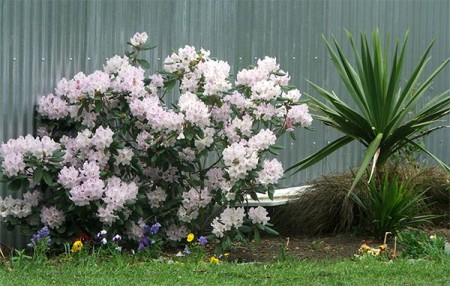
Rhododendron
Do not use pruning shears without a clear understanding of the purpose of pruning. But goals are different...
- Sanitary pruning, or cleaning. We remove all dry, broken, diseased and damaged branches.
- Formative, or structural pruning.Let's look at the bush from the outside and imagine the image of the plant that we will strive for for several years. Having determined the optimal shape of the bush, we remove all unnecessary things, cut out branches that cross, shade each other, or grow towards the center.
- Rejuvenating, or deep pruning. Once every three years, we cut out some of the old branches to the base.
- Radical pruning, or “landing on a stump.” Every year at the beginning of April we trim the entire bush to a short stump.
The timing of pruning depends on the type of pruning and the growth characteristics of the shrubs.
- Early spring. Pruning, which is carried out from the end of frost until the buds open, coincides with the natural rhythms of plant life and therefore stimulates powerful shoot growth.
- Early summer. After active sap flow is completed, spring-flowering shrubs and vines are pruned at the beginning of shoot growth.
- Summer pruning. Until August, branches are selectively removed to curb vegetative growth.
Pruning technique
The cut site should be smooth, without damage to the bark and cambium, which will “heal” the wound. Thin branches (up to a centimeter in diameter) are removed with pruning shears, thicker ones - with a garden saw or lopper. When shortening the branches, they make a “bud cut”.
The sections are immediately covered with garden varnish or sealed with adhesive tape. Sections with a diameter of less than 0.5 cm do not need to be processed.
The need for pruning of various shrubs
Features of pruning shrubs depend on the characteristics of its growth. Conventionally, shrubs can be divided into several groups.
First trimming group
These are deciduous shrubs that bloom in spring and early summer. New shoots are always formed in the lower part of the bush or in the middle of last year's branches, and flower buds are formed on last year's growths.
Shrubs of this group are pruned immediately after flowering. They are treated with sanitary pruning in the spring and maintenance pruning (once every three years) in the spring after flowering, while approximately half of all old branches are completely removed. If the bush has not been pruned for a long time, try to rejuvenate it by cutting it almost to the ground.
This group includes tall spring-flowering spirea (sharp-toothed, Thunberg, Vangutta, crenate, oak-leaved, Nippon, gray, or ash), forsythia, mock orange (garden jasmine), deutzia, weigela, Japanese kerria, ornamental currant, tree peony and other early flowering shrubs.
Most of them age quickly: noticeably fewer flowers form on old branches, the branches become bare and the bush loses its decorative appearance.
Kerria japonica, which often freezes in winter, can be cut short all over; it manages to grow up to a meter in a season and even bloom. The resulting bushes have a neater shape than the old ones that were falling apart. Particularly interesting are the variegated forms of kerria planted on a stump.
Weigelu Theoretically, you can’t prune it too much (it won’t bloom). But weigels have a fairly high shoot-forming ability, so frozen plants can be safely cut to zero: by autumn they even bloom with a few flowers.
forsythia, In which most flowers are formed on three-year-old branches, they do not touch them unless absolutely necessary, only sanitary pruning is carried out.
Second trimming group
This group includes deciduous shrubs that bloom in mid-summer and autumn, in which flowers form on the shoots of the current year: buddleia, summer-blooming spirea (Japanese, Douglas, white-flowered, willow), paniculata hydrangea, tree hydrangea, shrubby cinquefoil.
To maintain the compact, beautiful shape of these shrubs, in early spring, last year’s annual shoots are radically pruned to a short stump 10-15 cm high. Thin, weak branches are cut to the base. Wilted inflorescences are also cut off, but in hydrangeas the inflorescences, which retain their decorative value until the end of the season, are not touched.
When pruned annually, Japanese spirea produce dense, profusely flowering, colorful plants.
This group also includes deciduous subshrubs: karyopteris, lavatera, lavender, fragrant rue. The shoots of these plants become lignified only in the lower part, and the upper part, as a rule, freezes in winter.
They are not pruned early in the spring, but a little later, when the buds in the lower part of the bush wake up and you can see how much to shorten the stems.
Third group of pruning
This group includes deciduous ornamental deciduous shrubs (white dogwood, various types of elderberry).
Deren It is distinguished not only by its beautiful leaves, but also by its very bright red or cherry bark. But it only happens like this on young shoots; with age, the bark turns gray and the leaves become smaller.
Always bright branches can be achieved only by annual or once every two years “planting on a stump”, that is, short pruning in early spring (usually stumps of 10-15 cm are left). Don't be afraid to do this: the turf grows over the season.
Almost all species require heavy pruning in spring. elderberries. In addition, black elderberry varieties freeze heavily in winter. After pruning, elderberry quickly grows back and appears in all the glory of its large carved leaves.
Tamarix and myricaria They also freeze.But they are heavily pruned every year, even in countries with mild climates (so as not to stretch out). After pruning, the plant shoots grow 1-1.5 m and look wonderful, surprising with their delicacy.
Fourth trimming group
This includes all shrubs that do not regularly form replacement shoots at the base of the bush. Shrubs that produce new shoots only from the apical and upper lateral buds along the periphery of the crown bloom and remain viable without maintenance pruning. Older branches are not superfluous here - they form the crown.
All types hawthorn, serviceberry, lilac, deciduous euonymus, cotoneaster, viburnum, mackerel, ornamental varieties of cherries, plums and apple trees, bush maples They only need sanitary pruning and crown thinning.
Needs special pruning more than others lilac. Without pruning, flowering becomes sparse, growths and inflorescences become smaller
Lilac flower buds are located on the tops of last year's growths located in the upper part of the crown, so they cannot be shortened. In a well-developed bush, you can remove part of the shoots with flower buds, leaving the strongest and best located ones, then the remaining inflorescences will be larger. For the same purpose, all weak crowns growing inward, intersecting, and competing shoots are cut into a ring.
Lilacs are pruned in the spring, before sap flows. Before setting seeds, remove faded panicles, being careful not to damage nearby shoots with leaves on which new flower buds are formed.
Fifth trimming group
This group includes evergreen shrubs and creeping forms (rhododendrons, evergreen species of viburnum and cotoneaster, cherry laurel, dwarf forms of willow and gorse). Due to uniform growth along the perimeter of the crown, they form a strong, beautiful bush without pruning. Only diseased or frozen shoots are removed in the spring.
Subtleties of pruning
- Shorten branches with long internodes a few millimeters above the outward-facing bud. This applies to bush maples, hydrangeas, weigels, as well as shrubs with hollow shoots (forsythia, elderberry, some honeysuckle).
- The vitality and splendor of flowering of many ornamental shrubs is stimulated by maintenance or maintenance pruning, when, by removing old branches, space is made for younger and stronger shoots. Shrubs that have been neglected or have been pruned incorrectly for years can be brought into order with the help of anti-aging pruning.
- Pay attention to the natural shape of the shrubs. It is hardly possible to keep the bush small for a long time or force it to grow unnaturally without harming the flowering. When performing maintenance pruning, try to preserve the natural appearance of the plant, and not cut all the branches “with the same comb.” Start pruning from the bottom of the bush and work your way up. This will save you from double work, since thinner branches are removed at the same time as the whole branch.
- In most cases, the death of old shoots in shrubs is a natural process and should not cause much concern.
To understand at what interval to cut out old shoots to rejuvenate the bush, you need to know the life expectancy of one shoot: for spring-flowering spirea and shrubby cinquefoil - 3-5; for mock oranges, rosehips, weigels, barberries - 5-10 years.
Shoots of tall shrubs (lilac, hawthorn) live much longer. Old branches are identified by weak lateral branches with many short growths.
Decorative vines are pruned after the leaves bloom in late spring or summer. Early spring pruning is dangerous due to strong sap flow. More often, only dry and poorly placed shoots are cut out.
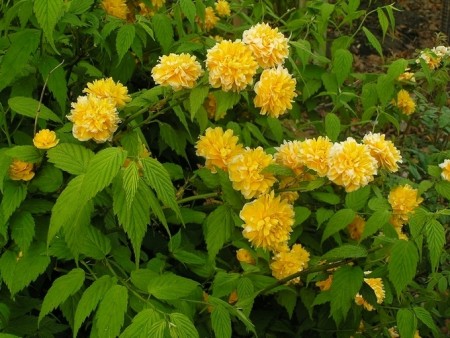
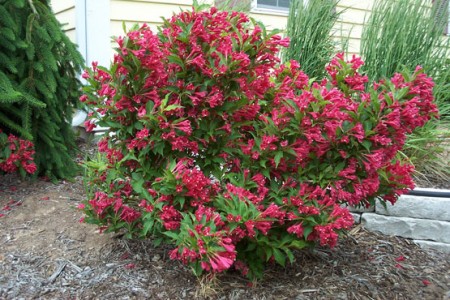
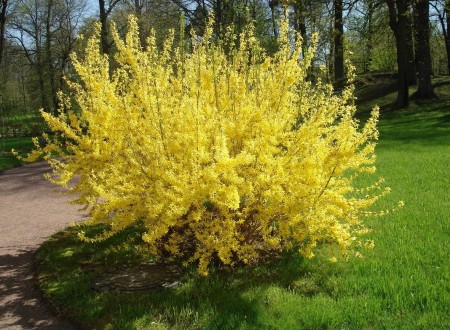
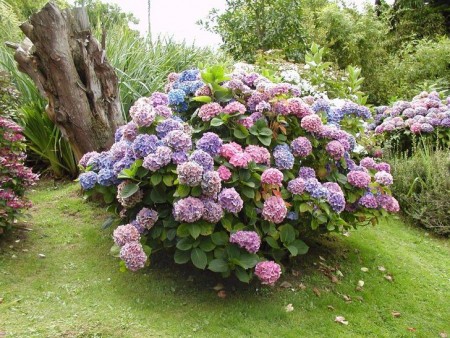
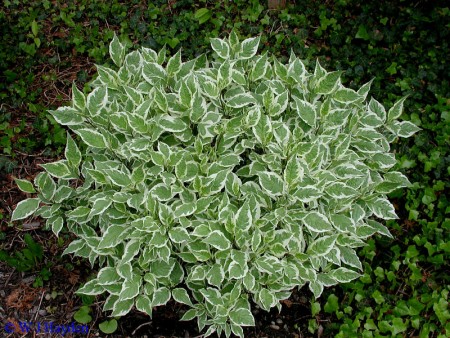
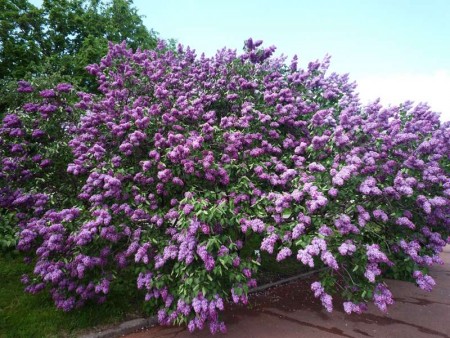


 CUCUMBERS NEVER GET SICK, I'VE BEEN USING ONLY THIS FOR 40 YEARS! I SHARE A SECRET WITH YOU, CUCUMBERS ARE LIKE THE PICTURE!
CUCUMBERS NEVER GET SICK, I'VE BEEN USING ONLY THIS FOR 40 YEARS! I SHARE A SECRET WITH YOU, CUCUMBERS ARE LIKE THE PICTURE! You can dig a bucket of potatoes from each bush. Do you think these are fairy tales? Watch the video
You can dig a bucket of potatoes from each bush. Do you think these are fairy tales? Watch the video
 How our fellow gardeners work in Korea. There is a lot to learn and just fun to watch.
How our fellow gardeners work in Korea. There is a lot to learn and just fun to watch. Eye trainer. The author claims that with daily viewing, vision is restored. They don't charge money for views.
Eye trainer. The author claims that with daily viewing, vision is restored. They don't charge money for views. A 3-ingredient cake recipe in 30 minutes is better than Napoleon. Simple and very tasty.
A 3-ingredient cake recipe in 30 minutes is better than Napoleon. Simple and very tasty. Therapeutic exercises for cervical osteochondrosis. A complete set of exercises.
Therapeutic exercises for cervical osteochondrosis. A complete set of exercises. Which indoor plants match your zodiac sign?
Which indoor plants match your zodiac sign? What about them? Excursion to German dachas.
What about them? Excursion to German dachas.